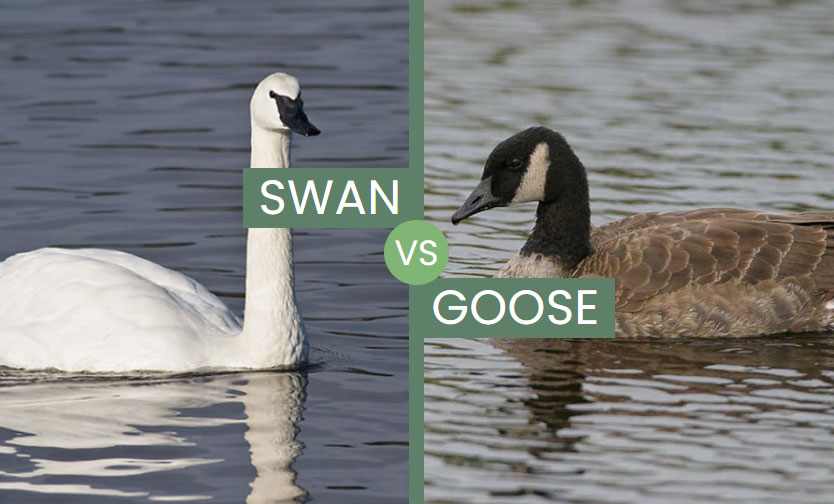Swans and geese are part of the around 18,000 identified bird species on earth. Part of the Anatidae family, these waterfowl birds are well-known and admired.
Being in the same family means these birds have a lot of similarities, including their similar appearances, behaviors, diets, etc. Because of this, you may find it hard to identify whether they’re looking at a swan or a goose.
In this guide, we’re going to go over everything you need to know about swans and geese. We’ll go into detail about these birds’ size, diet, behavior, location, and more!
Body & Shape
Swans and geese have similar body shapes. However, there is one feature we can look at to decipher if a bird is a swan or a goose, the neck.
Swans are known for their signature “S” shaped neck and graceful appearance. Their necks are thin and long, which contributes to this appearance. When we take a closer look at geese, it’s clear they don’t have the “S” shaped curve.
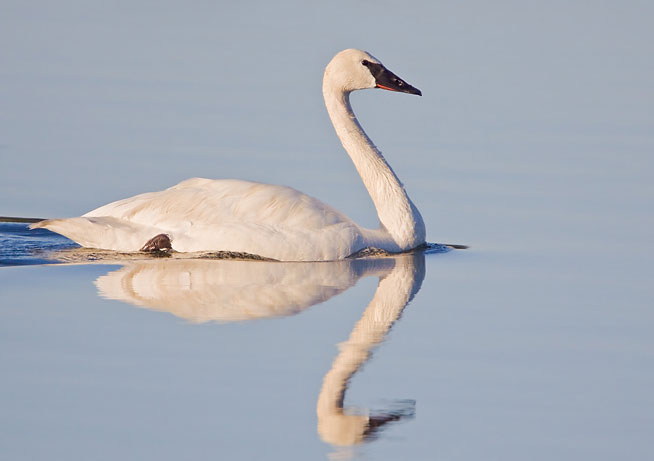
Trumpeter Swan
Additionally, geese’ necks are much straighter, thicker, and shorter. Both of these birds have webbed feet, and are in the waterfowl family. Waterfowls have special feathers that are covered in oil. This oil allows the water to run off the feathers instead of being absorbed.
Swans are large-sized birds that are mostly white. Of course, there is the Black Swan which has completely black feathers. This isn’t true with geese; they can be brown, blackish, or gray. The only place where geese would have white feathers is on their tail or underbelly.
The most commonly seen white swans are the Mute Swan, Tundra Swan, and Trumpeter Swan.
Geese are strong birds that are medium to large in size. They’re large wings are part of the reason they look so large, with the average wingspan being around 5 ft. The standout features of a goose are their duller colors and long necks.
Size
Weight and size are the primary differences between geese and swans. Swans are generally significantly bigger than geese and have longer necks as well.
The average swan weighs anywhere from 15 to 20 pounds and is around 59 inches long, depending on the species. Geese weigh between 5 and 14 pounds.
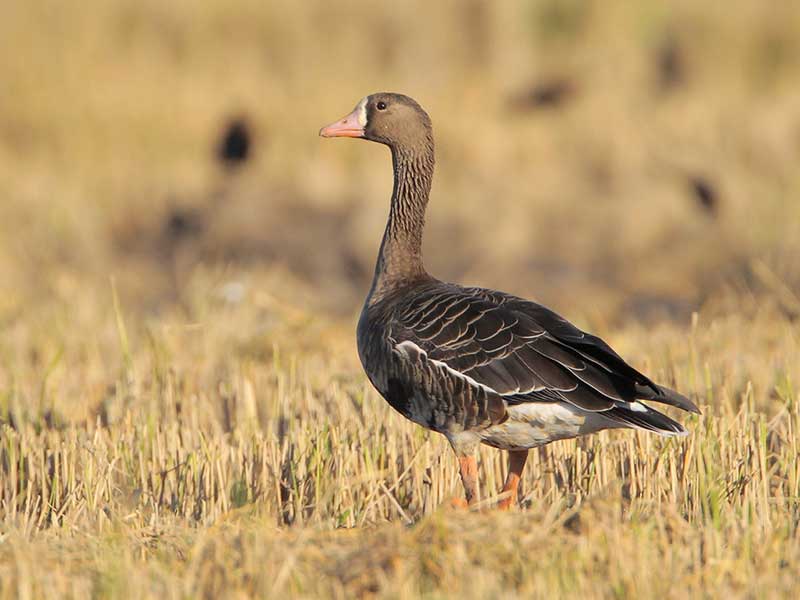
Geese are significantly smaller than swans.
Additionally, a swan’s wingspan can be as big as 10 feet, whereas geese usually have a wingspan of 3 to 4 feet. Even though swans are typically the bigger bird, geese actually have longer legs than geese.
But, of course, there are always exceptions. Some geese can be larger than swans. Knowing that swans are larger in size when compared to geese can make it easier for you to identify whether you’re looking at a goose or a swan.
Speed
Swans can run as fast as 22 miles per hour and fly anywhere from 18 to 30 miles per hour. Geese don’t run as fast as swans do but they do fly faster.
Geese can fly 40 miles per hour, but that speed can increase to 70 miles per hour if they catch a strong tailwind. Swans and geese are relatively comfortable around humans, making them peaceful creatures most of the time. However, there are some instances where they can become aggressive.
Both of these birds are known for their aggression, especially when they feel threatened or if it is protecting their young. While physical attacks are uncommon, they can be dangerous if they feel threatened enough with the speeds they can achieve.
Age
Wild swans tend to live longer than wild geese, which suggests they have more longevity than geese. However, it’s important to note that the lifespan can change depending on the breed.
On average, Swans can live up to 20 to 30 years, while ducks have a lifespan of 15 to 20 years. The lifespans shared previously are for wild swans and geese. Pet and farm-raised versions of these birds can live longer.
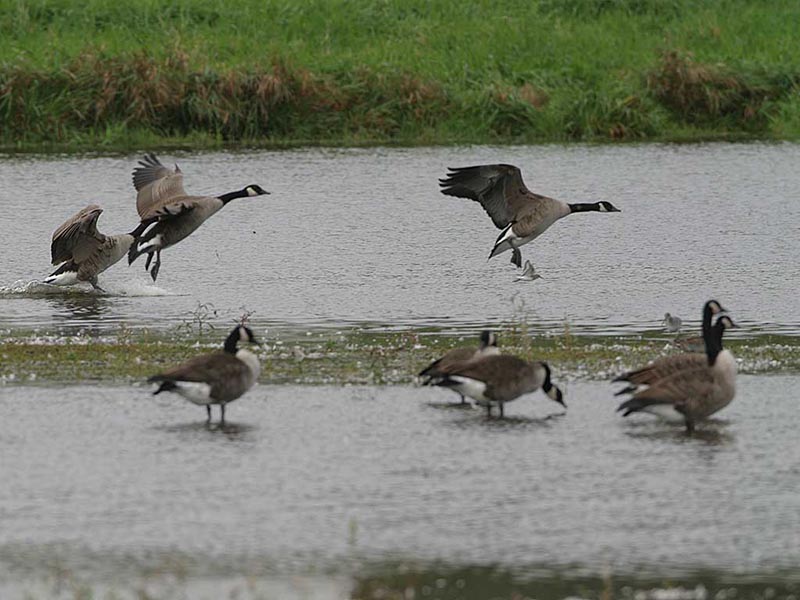
Geese have several predators skunks, raccoons, foxes, snakes, and crows prey on their eggs. Foxes, snapping turtles, bobcats, coyotes, raccoons, and hawks prey on goslings. People, bobcats, and coyotes, prey on the adults.
Baby swans, also known as cygnets, are mainly prey to herons, crows, magpies, pike, large perch, and turtles. Both full-grown swans and cygnets are prey to mink and foxes.
Behavior
Geese and swans are similar when it comes to their behavior. Both geese and swans typically partner for life. However, one will find a new mate if their partner dies or they “divorce.” These birds will “divorce” in the event of offspring death.
Most swans and geese return to the same place they were born every year. However, it’s not uncommon for them to create new territories. This could be because of an accident during migration because of a storm, a lack of resources, or being driven out by competitors.
Geese are very social birds, but swans are not. During the breeding season, geese can often be found in large groups of ducks, swans, and other geese. This benefits them because a larger group means less of a threat from predators.
As stated previously, swans can be found in flocks with other waterfowl like geese, ducks, and other swans during the winter. However, they usually prefer it just to be them, their mate, and young. Even mated pairs have been observed living separately simply because they enjoy their independence.
Predators are less of a concern for swans than geese because of their larger size and more aggressive nature. This means sticking in flocks is less of a priority for them.
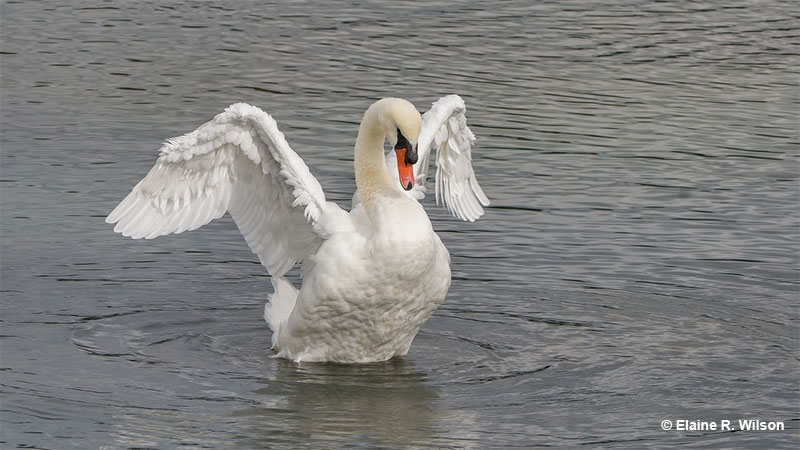
Diet
Geese are herbivores, they prefer to feast on vegetation that grows both inside and outside of the water. Swans, on the other hand, are omnivores. They prefer to consume mollusks, worms, fish, and frogs.
However, it’s important to note that while these are food items that swans and geese can be seen consuming regularly, their diets can vary significantly depending on the breed of goose or swan as well as the habitat they’re residing in. Swans have also been seen consuming plants both in and out of the water.
Location
Swans preferred breeding habitats include undisturbed lakes, shallow ponds, wetlands, marshes, and slow rivers. They require large areas of open land or water for landing and taking off due to their large size. They can be found on every continent in the world except Antarctica.
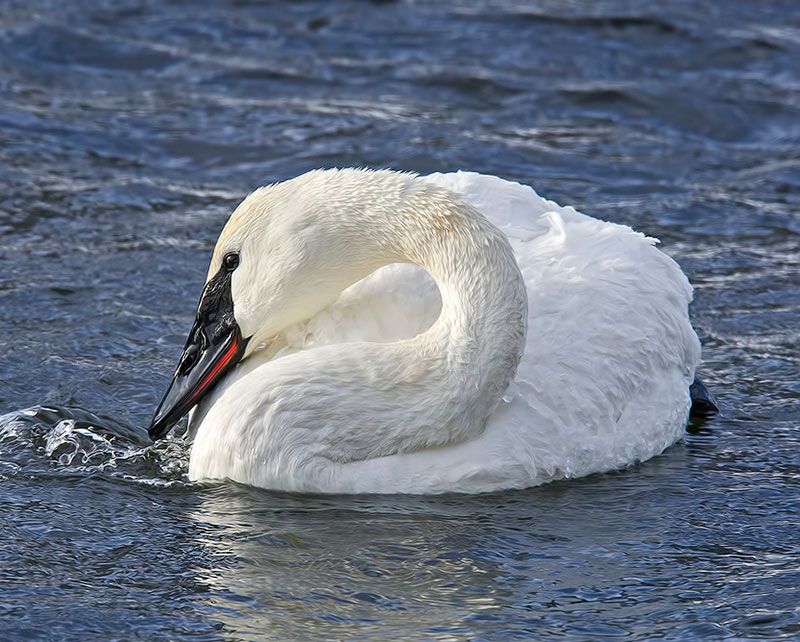
Tundra Swan
Geese live in a wide variety of habitats, but one thing that remains the same is that they like to live close to water. This could be in habitats such as marshes, wetlands, lakes, and streams. They can be found on every continent in the world except Antarctica.
All geese, both wild and domesticated, are very social creatures. During the breeding season, geese can usually be found in large flocks in the habitats listed above, where they spend almost all their time finding food.
Nest & Eggs
Swans and geese have similar breeding seasons. Both of these birds are considered very aggressive during the breeding season. This is because the parents share the responsibility of caring for the young.
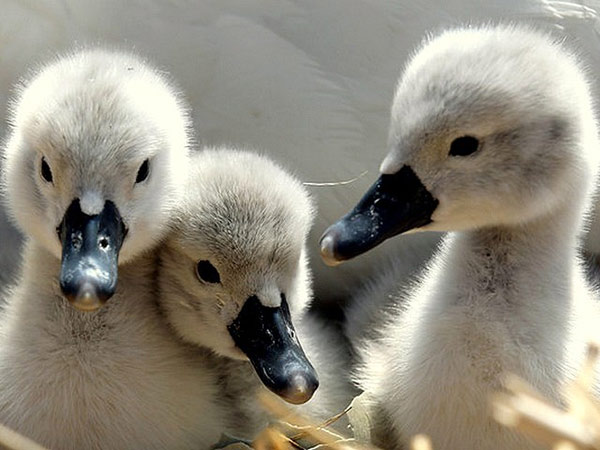
Cygnets
Swans will nest on mounds of aquatic vegetation. They build this nest close to the water’s edge. Geese will set up their nests in open grassy areas. They choose places where they have a good sightline to see predators and easy access to food sources.
Places like golf courses, manicured lawns, business campuses, and retention ponds are great for geese. Geese can lay as many as 10 eggs in one clutch, but the average clutch is between 2 to 5 eggs.
Learn more: Baby Geese
Swan clutches are typically 3 to 8 eggs, but they can lay as many as 12 eggs in one clutch. Swans have an incubation period of 30 to 45 days, while geese have an incubation period of about 28 days.
Frequently Asked Questions
Are swans just white geese?
No, swans are not just white geese. Swans are larger, have s-shaped necks, and are more aggressive than geese.

